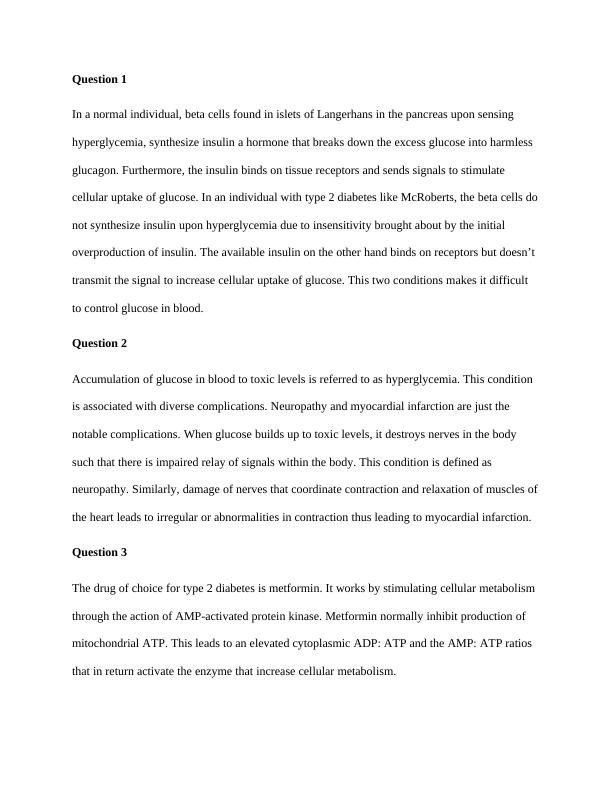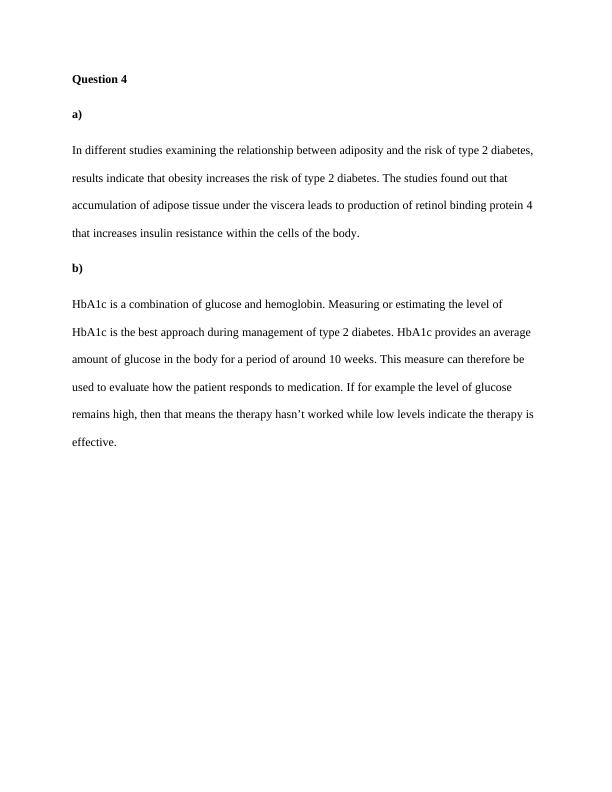Complications of Hyperglycemia and Management of Type 2 Diabetes
Added on 2023-01-18
4 Pages796 Words49 Views
End of preview
Want to access all the pages? Upload your documents or become a member.
Pathophysiology of Type 2 Diabetes Mellitus
|9
|837
|20
Question 1 Insulin synthesis and binding to target tissues is
|2
|436
|33
Vodcast on Type II Diabetes Mellitus
|10
|968
|75
Type II Diabetes Mellitus - A Brief Presentation
|7
|889
|64
Type II Diabetes Mellitus Vodcast Questions
|8
|1999
|483
Endocrine System and Diabetes Management
|27
|1855
|158

